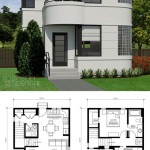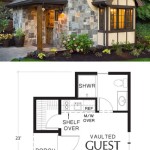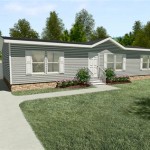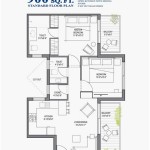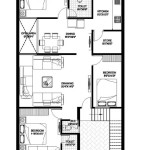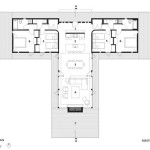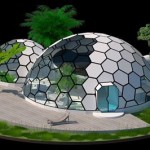Metal House Plans refer to architectural blueprints and designs that specifically outline the construction of houses using metal as the primary framing material. Metal framing offers numerous advantages over traditional wood framing, including increased durability, resistance to pests and moisture, and enhanced structural integrity.
For instance, metal house plans allow for the construction of homes in regions prone to wildfires, high-wind storms, or termite infestations. The non-combustible nature of metal provides peace of mind and added protection against potential disasters, making it a compelling option for homeowners seeking both safety and longevity.
In this article, we will delve deeper into the benefits and applications of metal house plans, exploring the various design options, materials, and construction techniques involved in creating a durable and stylish metal home.
Metal house plans offer numerous advantages and applications, making them a compelling choice for homeowners seeking durability, sustainability, and design flexibility.
- Durable and long-lasting
- Resistant to pests and moisture
- Fire-resistant
- Versatile design options
- Environmentally friendly
- Cost-effective in the long run
- Low maintenance
- Faster construction times
- Improved structural integrity
- Suitable for various climates
These key attributes make metal house plans an attractive option for homeowners who prioritize safety, longevity, and sustainability in their homes.
Durable and long-lasting
Metal house plans offer superior durability and longevity compared to traditional wood-framed homes. Metal framing materials, such as steel and aluminum, are highly resistant to rot, decay, and insect infestations, which can significantly reduce maintenance costs and extend the lifespan of the home.
- Resistant to rot and decay: Unlike wood, metal does not absorb moisture, making it impervious to rot and decay. This eliminates the risk of structural damage and costly repairs associated with moisture-related issues.
- Immune to termite and pest damage: Metal is not susceptible to termite or pest infestations, which can cause extensive damage to wooden structures. This inherent resistance provides peace of mind and reduces the need for ongoing pest control treatments.
- Exceptional strength and durability: Metal framing materials possess superior strength and durability compared to wood. They can withstand high winds, earthquakes, and other extreme weather conditions without compromising the structural integrity of the home.
- Longevity and low maintenance: Metal homes have a significantly longer lifespan than wood-framed homes, often exceeding 50 years with minimal maintenance. The non-combustible nature of metal also reduces the risk of fire damage, further contributing to the longevity of the structure.
The exceptional durability and longevity of metal house plans make them an ideal choice for homeowners seeking a low-maintenance and long-lasting home.
Resistant to pests and moisture
Metal house plans offer superior resistance to pests and moisture compared to traditional wood-framed homes. This exceptional resistance stems from the inherent properties of metal and the construction techniques employed in metal homes.
- No organic materials for pests: Unlike wood, metal does not contain organic materials that attract pests such as termites, carpenter ants, and rodents. This eliminates the risk of structural damage and costly repairs associated with pest infestations.
- Non-porous and moisture-resistant: Metal is a non-porous material that does not absorb moisture, making it highly resistant to rot, decay, and mold growth. This moisture resistance also prevents moisture-related issues such as warping, buckling, and structural weakening.
- Tightly sealed construction: Metal homes are typically constructed with tightly sealed joints and connections, further preventing moisture penetration and pest entry. This attention to detail ensures a dry and pest-free living environment.
- Durable exterior finishes: Metal house plans often incorporate durable exterior finishes such as metal siding, roofing, and trim. These finishes provide an additional layer of protection against moisture and pests, enhancing the overall longevity and performance of the home.
The exceptional resistance to pests and moisture makes metal house plans an ideal choice for homeowners seeking a low-maintenance and durable home in any climate.
Fire-resistant
Metal house plans offer exceptional fire resistance compared to traditional wood-framed homes. This inherent fire resistance stems from the non-combustible nature of metal and the construction techniques employed in metal homes.
- Non-combustible materials: Unlike wood, metal does not burn or support combustion. This means that metal framing, roofing, and siding materials will not contribute to the spread of a fire, providing a crucial layer of protection for the home and its occupants.
- High melting point: Metal has a very high melting point, which means it can withstand extreme temperatures without losing its structural integrity. This makes metal homes highly resistant to structural collapse in the event of a fire, ensuring the safety of occupants and firefighters.
- Fire-resistant construction methods: Metal homes are typically constructed using fire-resistant construction methods, such as steel studs and metal sheathing. These materials provide additional protection against the spread of fire and heat, further enhancing the overall fire resistance of the home.
- Reduced risk of fire ignition: Metal is not easily ignited by sparks or embers, reducing the risk of fire ignition from external sources. This makes metal homes particularly suitable for areas prone to wildfires or other fire hazards.
The exceptional fire resistance of metal house plans provides peace of mind and added protection against the devastating effects of fire, making them an ideal choice for homeowners seeking a safe and secure home.
Versatile design options
Metal house plans offer a wide range of versatile design options, allowing homeowners to customize their homes to suit their unique tastes and lifestyles. Unlike traditional wood-framed homes, metal framing provides greater flexibility in design, enabling architects and builders to create innovative and visually striking structures.
- Curved walls and unique shapes: Metal framing can be easily bent and shaped, allowing for the creation of curved walls, rounded corners, and other unique architectural features. This design flexibility opens up possibilities for more organic and fluid living spaces.
- Open floor plans and high ceilings: Metal framing’s strength and durability make it possible to create open floor plans with fewer load-bearing walls. This allows for more spacious and airy living areas, with high ceilings that enhance the sense of volume and grandeur.
- Unique rooflines and overhangs: Metal roofing and framing systems provide the flexibility to create unique rooflines and overhangs that add visual interest to the home. From sloped roofs to flat roofs with cantilevered overhangs, the design possibilities are virtually limitless.
- Modern and contemporary aesthetics: Metal house plans are often associated with modern and contemporary architectural styles, characterized by clean lines, geometric shapes, and large windows. Metal’s sleek and industrial aesthetic lends itself well to these design styles, creating visually striking and stylish homes.
The versatile design options of metal house plans empower homeowners to create truly unique and personalized living spaces that reflect their individual tastes and lifestyles.
Environmentally friendly
Metal house plans offer significant environmental benefits compared to traditional wood-framed homes. The use of metal framing, roofing, and siding materials contributes to sustainability and reduces the environmental impact of construction and homeownership.
- Recyclable materials: Metal is a highly recyclable material, with a recycling rate of over 95%. This means that metal components of a home, such as framing, roofing, and siding, can be recycled at the end of their lifespan, reducing waste and conserving natural resources.
- Reduced deforestation: Unlike wood, metal does not require the harvesting of trees, helping to preserve forests and reduce deforestation. This is particularly important in regions where deforestation is a major environmental concern.
- Energy efficiency: Metal homes can be designed to be highly energy-efficient, reducing energy consumption and greenhouse gas emissions. Metal framing and roofing materials can help regulate indoor temperatures, reducing the need for heating and cooling systems.
- Durability and longevity: Metal homes have a significantly longer lifespan than wood-framed homes, often exceeding 50 years with minimal maintenance. This durability reduces the need for frequent renovations and replacements, conserving resources and minimizing environmental impact.
By choosing metal house plans, homeowners can contribute to a more sustainable and environmentally friendly built environment.
Cost-effective in the long run
Metal house plans offer significant cost savings in the long run compared to traditional wood-framed homes. While the initial cost of building a metal home may be slightly higher, the long-term savings in maintenance, repairs, and energy efficiency outweigh the upfront investment.
- Low maintenance costs: Metal homes require minimal maintenance compared to wood-framed homes. The non-combustible nature of metal eliminates the risk of rot, decay, and pest damage, reducing the need for costly repairs and replacements.
- Reduced energy bills: Metal homes can be designed to be highly energy-efficient, thanks to the insulating properties of metal and the ability to incorporate energy-efficient features such as radiant barrier roofing and insulated metal panels. This can lead to significant savings on energy bills over the lifetime of the home.
- Insurance savings: Metal homes are often eligible for lower insurance premiums due to their fire resistance and durability. Insurance companies recognize the reduced risk of fire damage and structural failure, which can result in lower insurance costs for homeowners.
- Increased lifespan: Metal homes have a significantly longer lifespan than wood-framed homes, often exceeding 50 years with minimal maintenance. This extended lifespan reduces the overall cost of homeownership by eliminating the need for major renovations or replacements.
While the initial cost of building a metal home may be slightly higher, the long-term savings in maintenance, repairs, energy efficiency, and insurance premiums make metal house plans a cost-effective investment in the long run.
Low maintenance
Metal house plans offer significant advantages in terms of low maintenance compared to traditional wood-framed homes. The inherent properties of metal and the construction techniques employed in metal homes contribute to their exceptional durability and resistance to various environmental factors.
- Resistance to pests and moisture: Unlike wood, metal is non-porous and does not absorb moisture, making it highly resistant to rot, decay, and mold growth. This eliminates the need for regular treatments and repairs associated with moisture-related issues, such as repainting, replacing siding, or repairing structural damage caused by rot.
- Non-combustible materials: Metal is a non-combustible material, which means it does not burn or support combustion. This eliminates the risk of fire damage, which can be a major source of maintenance and repair costs in wood-framed homes. Metal roofs and siding are also highly resistant to fading and discoloration caused by sun exposure, reducing the need for frequent repainting or replacement.
- Durable exterior finishes: Metal house plans often incorporate durable exterior finishes such as metal siding, roofing, and trim. These finishes are designed to withstand harsh weather conditions, including rain, snow, wind, and UV radiation. They require minimal maintenance and can last for decades without the need for repainting or replacement.
- Reduced need for structural repairs: The exceptional strength and durability of metal framing materials make metal homes highly resistant to structural damage caused by factors such as high winds, earthquakes, and heavy snow loads. This reduces the likelihood of costly structural repairs and maintenance over the lifespan of the home.
The low maintenance requirements of metal house plans translate to significant savings in time, effort, and financial resources over the long term, making them an attractive option for homeowners seeking a hassle-free and low-maintenance home.
Faster construction times
Metal house plans offer significantly faster construction times compared to traditional wood-framed homes. The unique properties of metal and the construction techniques employed in metal homes contribute to this increased efficiency.
- Prefabricated components: Metal house plans often utilize prefabricated components, such as pre-cut metal framing, roofing panels, and wall panels. These components are manufactured off-site in controlled factory environments, ensuring precision and quality. The prefabrication process significantly reduces the time spent on-site, as the components can be assembled quickly and efficiently.
- Simplified framing: Metal framing systems are typically simpler and faster to install compared to wood framing. Metal studs are lightweight and easy to handle, and they can be connected using self-drilling screws, eliminating the need for nails or complicated joinery techniques. This simplified framing process reduces the overall construction time.
- Faster roofing and siding installation: Metal roofing and siding materials are lightweight and easy to install, which contributes to faster construction times. Metal roofing panels can be quickly attached to the roof framing using specialized fasteners, and metal siding panels can be installed over the exterior walls in a relatively short amount of time.
- Reduced weather delays: Metal construction is less susceptible to weather delays compared to wood-framed construction. Metal components are not affected by rain or moisture, and they can be installed even in inclement weather conditions. This reduces the risk of construction delays and ensures a more consistent timeline.
The faster construction times associated with metal house plans result in several benefits for homeowners. These benefits include reduced construction costs, earlier occupancy of the home, and the ability to move into the home during the desired season.
In addition to the faster construction times, metal house plans offer numerous other advantages, including increased durability, lower maintenance requirements, and greater energy efficiency. These advantages make metal house plans an attractive option for homeowners seeking a durable, low-maintenance, and energy-efficient home.
Improved structural integrity
Metal house plans offer superior structural integrity compared to traditional wood-framed homes. The inherent strength and durability of metal framing materials, combined with the advanced construction techniques employed in metal homes, contribute to their exceptional ability to withstand various structural loads and environmental forces.
- Resistance to high winds and earthquakes: Metal framing systems are highly resistant to high winds and earthquakes due to their inherent strength and flexibility. Metal studs and joists are designed to withstand lateral forces and prevent structural collapse, ensuring the safety and stability of the home during extreme weather events.
- Exceptional load-bearing capacity: Metal framing materials have a high strength-to-weight ratio, allowing them to bear heavy loads without compromising structural integrity. This makes metal house plans suitable for multi-story homes, large open floor plans, and heavy roofing materials.
- Non-combustible materials: Metal is a non-combustible material, which means it does not burn or support combustion. This inherent fire resistance provides exceptional structural stability in the event of a fire, reducing the risk of structural failure and collapse.
- Resistance to pests and moisture: Unlike wood, metal is not susceptible to termite or pest infestations, and it is highly resistant to moisture damage. This eliminates the risk of structural damage caused by these factors, ensuring the long-term integrity of the home.
The improved structural integrity of metal house plans translates to a number of benefits for homeowners. These benefits include increased safety and peace of mind, reduced maintenance costs, and a longer lifespan for the home.
Suitable for various climates
Metal house plans offer exceptional adaptability to a wide range of climates, making them a versatile choice for homeowners in diverse geographic locations. The unique properties of metal and the advanced construction techniques employed in metal homes contribute to their ability to withstand extreme weather conditions and maintain a comfortable indoor environment.
Resistance to extreme temperatures: Metal is highly resistant to extreme temperatures, both hot and cold. Metal roofing and siding materials reflect sunlight and heat, reducing the transfer of heat into the home during hot weather. Conversely, metal’s low thermal conductivity helps retain heat inside the home during cold weather, resulting in improved energy efficiency and reduced heating costs.
Durability in high-wind regions: Metal house plans are particularly well-suited for high-wind regions thanks to the inherent strength and flexibility of metal framing. Metal studs and joists are designed to withstand high wind loads and prevent structural damage. Metal roofing systems are also highly resistant to wind uplift, ensuring the integrity of the roof even during severe storms.
Performance in snowy climates: Metal roofing and siding are ideal for snowy climates due to their ability to shed snow and ice effectively. The smooth surface of metal prevents snow and ice from accumulating, reducing the risk of roof leaks and structural damage. Additionally, metal’s high strength-to-weight ratio allows for the design of roofs with steeper slopes, further enhancing snow shedding capabilities.
Adaptability to coastal environments: Metal house plans are well-suited for coastal environments where exposure to salt spray and moisture is a concern. Metal is highly resistant to corrosion, making it an excellent choice for homes near the ocean. Metal roofing and siding materials are also available with special coatings designed to withstand the harsh conditions of coastal environments.
The suitability of metal house plans for various climates provides homeowners with greater flexibility and peace of mind. Metal homes can be tailored to the specific climatic conditions of the region, ensuring optimal performance and long-term durability.










Related Posts

